-
EXECUTIVE SUMMARY 17
-
GLOBAL BUSES AND
-
COACHES MARKET, BY TYPE 19
-
GLOBAL BUSES AND COACHES MARKET, BY PROPULSION 20
-
GLOBAL BUSES AND COACHES
-
MARKET, BY SEAT CAPACITY 21
-
GLOBAL BUSES AND COACHES MARKET, BY APPLICATION 22
-
GLOBAL BUSES AND
-
COACHES MARKET, BY SALES CHANNEL 23
-
GLOBAL BUSES AND COACHES MARKET, BY REGION 24
-
MARKET INTRODUCTION
-
DEFINITION
-
SCOPE
-
OF THE STUDY 25
-
RESEARCH OBJECTIVE 25
-
MARKET STRUCTURE 26
-
RESEARCH METHODOLOGY 27
-
RESEARCH PROCESS 27
-
PRIMARY RESEARCH 28
-
SECONDARY RESEARCH 29
-
MARKET SIZE ESTIMATION 30
-
FORECAST MODEL 31
-
LIST OF ASSUMPTIONS 32
-
MARKET DYNAMICS 33
-
OVERVIEW 33
-
DRIVERS 34
- INCREASED APPETITE FOR CONNECTIVITY AND EMERGING
-
TECHNOLOGIES 34
-
GROWING INVESTMENTS IN PUBLIC TRANSPORTATION INFRASTRUCTURE 34
-
RESTRAINTS 35
- HIGH INITIAL COST 35
-
OPPORTUNITIES 36
- INCREASING DEMAND
-
FOR ELECTRIC & HYBRID VEHICLES 36
-
COVID-19 IMPACT ANALYSIS 36
- IMPACT ON OVERALL AUTOMOTIVE INDUSTRY 36
- IMPACT
- IMPACT ON THE SUPPLY CHAIN 37
- IMPACT ON MARKET DEMAND OF BUSES AND COACHES
- IMPACT ON PRICING OF BUSES AND COACHES 39
-
ON BUSES AND COACHES MARKET 37
-
CASH FLOW CONSTRAINTS 38
-
IMPACT DUE TO RESTRICTION/LOCKDOWN 39
-
MARKET FACTOR ANALYSIS
-
SUPPLY
- RAW MATERIAL SUPPLY 41
- MANUFACTURE & ASSEMBLY 41
- SALES & DISTRIBUTION
- END
- THREAT OF NEW ENTRANTS 43
- BARGAINING POWER OF SUPPLIERS 43
- THREAT OF SUBSTITUTES
- BARGAINING
-
CHAIN ANALYSIS 40
-
DESIGN & DEVELOPMENT 41
-
USERS 42
-
PORTER''S FIVE FORCES MODEL 42
-
POWER OF BUYERS 43
-
INTENSITY OF RIVALRY 43
-
GLOBAL BUSES AND COACHES MARKET, BY TYPE 44
-
OVERVIEW 44
-
SINGLE DECK 45
-
DOUBLE DECK 45
-
LOW FLOOR BUSES 46
-
MINIBUS 46
-
COACHES 46
-
OTHERS 46
-
GLOBAL BUSES AND COACHES MARKET, BY PROPULSION
-
OVERVIEW
-
ICE
-
ELECTRIC
-
GLOBAL
-
BUSES AND COACHES MARKET, BY SEAT CAPACITY 50
-
OVERVIEW 50
-
15-30 SEATS 51
-
31-50 SEATS 51
-
MORE THAN 50 SEATS 52
-
GLOBAL BUSES AND COACHES MARKET, BY APPLICATION
-
OVERVIEW
-
CITY
-
BUSES 54
-
INTERCITY BUSES 54
-
AIRPORT SHUTTLE 55
-
DELIVERY VAN 55
-
SCHOOL BUSES 55
-
OTHERS 56
-
GLOBAL BUSES AND COACHES MARKET, BY SALES CHANNEL 57
-
OVERVIEW 57
-
OEM 58
-
AFTERMARKET 58
-
GLOBAL BUSES AND COACHES MARKET, BY REGION 59
-
OVERVIEW 59
-
NORTH AMERICA 61
- US 63
- CANADA 65
- MEXICO 67
-
EUROPE 69
- GERMANY 71
- FRANCE 73
- UK 75
- SPAIN 76
- ITALY 78
- POLAND 80
- CZECH REPUBLIC
- REST
-
OF EUROPE 83
-
ASIA-PACIFIC 85
-
CHINA 88
-
INDIA 89
-
JAPAN 91
-
SOUTH KOREA 93
-
AUSTRALIA 94
-
REST OF ASIA-PACIFIC 96
-
MIDDLE EAST & AFRICA 98
- EGYPT 100
- TURKEY 102
- REST OF MIDDLE EAST & AFRICA 104
-
LATIN AMERICA 106
-
COMPETITIVE LANDSCAPE
-
OVERVIEW
-
COMPETITIVE
-
BENCHMARKING 109
-
MARKET SHARE ANALYSIS, 2022 110
-
KEY DEVELOPMENT IN THE GLOBAL BUSES AND COACHES MARKET 110
- PRODUCT LAUNCH
-
COLLABORATION 110
-
PARTNERSHIP 111
-
EXPANSION 111
-
INVESTMENT 111
-
ACQUSITION 112
-
CONTRACTS & AGREEMENTS 112
-
COMPANY PROFILES 113
-
ANHUI ANKAI AUTOMOBILE CO., LTD 113
- COMPANY OVERVIEW 113
- FINANCIAL OVERVIEW
- COMPANY OVERVIEW 117
- FINANCIAL OVERVIEW 118
- PRODUCTS OFFERED 118
- KEY DEVELOPMENTS 119
- SWOT ANALYSIS 119
- KEY STRATEGIES 119
-
PRODUCTS OFFERED 114
-
KEY DEVELOPMENTS 115
-
SWOT ANALYSIS 116
-
KEY STRATEGIES 116
-
BYD COMPANY LIMITED 117
-
DAIMLER TRUCK AG 120
- COMPANY OVERVIEW 120
- FINANCIAL OVERVIEW 120
- PRODUCTS OFFERED 121
- KEY DEVELOPMENTS 122
- SWOT ANALYSIS 122
- KEY STRATEGIES 122
-
PROTERRA 123
- COMPANY OVERVIEW 123
- FINANCIAL OVERVIEW 123
- PRODUCTS OFFERED 124
- KEY DEVELOPMENTS 124
- SWOT ANALYSIS 125
- KEY STRATEGIES 125
-
AB VOLVO 126
- COMPANY OVERVIEW 126
- FINANCIAL OVERVIEW 127
- PRODUCTS OFFERED 127
- KEY DEVELOPMENTS 128
- SWOT ANALYSIS 128
- KEY STRATEGIES 129
-
MAN 130
- COMPANY OVERVIEW 130
- FINANCIAL OVERVIEW 130
- PRODUCTS OFFERED 131
- KEY DEVELOPMENTS 131
- SWOT ANALYSIS 132
- KEY STRATEGIES 132
-
XIAMEN KING LONG UNITED AUTOMOTIVE INDUSTRY
- COMPANY OVERVIEW 136
- FINANCIAL OVERVIEW 136
- PRODUCTS OFFERED 137
- KEY DEVELOPMENTS 137
- SWOT ANALYSIS 137
- KEY STRATEGIES 138
-
CO., LTD 133
-
COMPANY OVERVIEW 133
-
FINANCIAL OVERVIEW 133
-
PRODUCTS OFFERED 134
-
KEY DEVELOPMENTS 134
-
SWOT ANALYSIS 135
-
KEY STRATEGIES 135
-
YUTONG BUS CO., LTD. 136
-
NFI GROUP 139
- COMPANY OVERVIEW 139
- FINANCIAL OVERVIEW 140
- PRODUCTS OFFERED 140
- KEY DEVELOPMENTS 141
- SWOT ANALYSIS 141
- KEY STRATEGIES 141
-
TATA MOTORS 142
- COMPANY OVERVIEW 142
- FINANCIAL OVERVIEW 143
- PRODUCTS OFFERED 143
- KEY DEVELOPMENTS
-
SWOT ANALYSIS 144
-
KEY STRATEGIES 144
-
-
LIST OF TABLES
-
LIST OF ASSUMPTIONS
-
TABLE 2
-
GLOBAL BUSES AND COACHES MARKET ESTIMATES & FORECAST, BY TYPE, 2018-2032 (USD
-
MILLION) 45
-
TABLE
-
GLOBAL BUSES AND COACHES MARKET ESTIMATES & FORECAST, BY PROPULSION, 2018-2032
-
(USD MILLION) 49
-
TABLE
-
GLOBAL BUSES AND COACHES MARKET ESTIMATES & FORECAST, BY SEAT CAPACITY, 2018-2032
-
(USD MILLION) 51
-
TABLE
-
GLOBAL BUSES AND COACHES MARKET ESTIMATES & FORECAST, BY APPLICATION, 2018-2032
-
(USD MILLION) 54
-
TABLE
-
GLOBAL BUSES AND COACHES MARKET ESTIMATES & FORECAST, BY SALES CHANNEL, 2018-2032
-
(USD MILLION) 58
-
TABLE
-
GLOBAL BUSES AND COACHES MARKET ESTIMATES & FORECAST, BY REGION, 2019-2032
-
(USD MILLION) 60
-
TABLE
-
NORTH AMERICA: BUSES AND COACHES MARKET SIZE, BY COUNTRY, 2018-2032 (USD MILLION)
-
TABLE 9
-
NORTH AMERICA BUSES AND COACHES MARKET ESTIMATES & FORECAST, BY TYPE, 2018-2032
-
(USD MILLION) 62
-
TABLE
-
NORTH AMERICA BUSES AND COACHES MARKET ESTIMATES & FORECAST, BY PROPULSION,
-
NORTH AMERICA BUSES AND COACHES MARKET ESTIMATES & FORECAST,
-
BY SEAT CAPACITY, 2018-2032 (USD MILLION) 62
-
NORTH AMERICA BUSES AND COACHES MARKET ESTIMATES
-
& FORECAST, BY APPLICATION, 2018-2032 (USD MILLION) 63
-
NORTH AMERICA BUSES AND COACHES MARKET ESTIMATES
-
& FORECAST, BY SALES CHANNEL, 2018-2032 (USD MILLION) 63
-
US BUSES AND COACHES MARKET ESTIMATES &
-
FORECAST, BY TYPE, 2018-2032 (USD MILLION) 63
-
US BUSES AND COACHES MARKET ESTIMATES &
-
FORECAST, BY PROPULSION, 2018-2032 (USD MILLION) 64
-
US BUSES AND COACHES MARKET ESTIMATES &
-
FORECAST, BY SEAT CAPACITY, 2018-2032 (USD MILLION) 64
-
US BUSES AND COACHES MARKET ESTIMATES &
-
FORECAST, BY APPLICATION, 2018-2032 (USD MILLION) 64
-
US BUSES AND COACHES MARKET ESTIMATES &
-
FORECAST, BY SALES CHANNEL, 2018-2032 (USD MILLION) 65
-
CANADA BUSES AND COACHES MARKET ESTIMATES
-
& FORECAST, BY TYPE, 2018-2032 (USD MILLION) 65
-
CANADA BUSES AND COACHES MARKET ESTIMATES
-
& FORECAST, BY PROPULSION, 2018-2032 (USD MILLION) 65
-
CANADA BUSES AND COACHES MARKET ESTIMATES
-
& FORECAST, BY SEAT CAPACITY, 2018-2032 (USD MILLION) 66
-
CANADA BUSES AND COACHES MARKET ESTIMATES
-
& FORECAST, BY APPLICATION, 2018-2032 (USD MILLION) 66
-
CANADA BUSES AND COACHES MARKET ESTIMATES
-
& FORECAST, BY SALES CHANNEL, 2018-2032 (USD MILLION) 66
-
MEXICO BUSES AND COACHES MARKET ESTIMATES
-
& FORECAST, BY TYPE, 2018-2032 (USD MILLION) 67
-
MEXICO BUSES AND COACHES MARKET ESTIMATES
-
& FORECAST, BY PROPULSION, 2018-2032 (USD MILLION) 67
-
MEXICO BUSES AND COACHES MARKET ESTIMATES
-
& FORECAST, BY SEAT CAPACITY, 2018-2032 (USD MILLION) 67
-
MEXICO BUSES AND COACHES MARKET ESTIMATES
-
& FORECAST, BY APPLICATION, 2018-2032 (USD MILLION) 68
-
MEXICO BUSES AND COACHES MARKET ESTIMATES
-
& FORECAST, BY SALES CHANNEL, 2018-2032 (USD MILLION) 68
-
EUROPE: BUSES AND COACHES MARKET SIZE, BY
-
COUNTRY, 2018-2032 (USD MILLION) 69
-
EUROPE BUSES AND COACHES MARKET ESTIMATES &
-
FORECAST, BY TYPE, 2018-2032 (USD MILLION) 70
-
EUROPE BUSES AND COACHES MARKET ESTIMATES
-
& FORECAST, BY PROPULSION, 2018-2032 (USD MILLION) 70
-
EUROPE BUSES AND COACHES MARKET ESTIMATES
-
& FORECAST, BY SEAT CAPACITY, 2018-2032 (USD MILLION) 70
-
EUROPE BUSES AND COACHES MARKET ESTIMATES
-
& FORECAST, BY APPLICATION, 2018-2032 (USD MILLION) 71
-
EUROPE BUSES AND COACHES MARKET ESTIMATES
-
& FORECAST, BY SALES CHANNEL, 2018-2032 (USD MILLION) 71
-
GERMANY BUSES AND COACHES MARKET ESTIMATES
-
& FORECAST, BY TYPE, 2018-2032 (USD MILLION) 71
-
GERMANY BUSES AND COACHES MARKET ESTIMATES
-
& FORECAST, BY PROPULSION, 2018-2032 (USD MILLION) 72
-
GERMANY BUSES AND COACHES MARKET ESTIMATES
-
& FORECAST, BY SEAT CAPACITY, 2018-2032 (USD MILLION) 72
-
GERMANY BUSES AND COACHES MARKET ESTIMATES
-
& FORECAST, BY APPLICATION, 2018-2032 (USD MILLION) 72
-
GERMANY BUSES AND COACHES MARKET ESTIMATES
-
& FORECAST, BY SALES CHANNEL, 2018-2032 (USD MILLION) 73
-
FRANCE BUSES AND COACHES MARKET ESTIMATES
-
& FORECAST, BY TYPE, 2018-2032 (USD MILLION) 73
-
FRANCE BUSES AND COACHES MARKET ESTIMATES
-
& FORECAST, BY PROPULSION, 2018-2032 (USD MILLION) 73
-
FRANCE BUSES AND COACHES MARKET ESTIMATES
-
& FORECAST, BY SEAT CAPACITY, 2018-2032 (USD MILLION) 74
-
FRANCE BUSES AND COACHES MARKET ESTIMATES
-
& FORECAST, BY APPLICATION, 2018-2032 (USD MILLION) 74
-
FRANCE BUSES AND COACHES MARKET ESTIMATES
-
& FORECAST, BY SALES CHANNEL, 2018-2032 (USD MILLION) 74
-
UK BUSES AND COACHES MARKET ESTIMATES &
-
FORECAST, BY TYPE, 2018-2032 (USD MILLION) 75
-
UK BUSES AND COACHES MARKET ESTIMATES &
-
FORECAST, BY PROPULSION, 2018-2032 (USD MILLION) 75
-
UK BUSES AND COACHES MARKET ESTIMATES &
-
FORECAST, BY SEAT CAPACITY, 2018-2032 (USD MILLION) 75
-
UK BUSES AND COACHES MARKET ESTIMATES &
-
FORECAST, BY APPLICATION, 2018-2032 (USD MILLION) 76
-
UK BUSES AND COACHES MARKET ESTIMATES &
-
FORECAST, BY SALES CHANNEL, 2018-2032 (USD MILLION) 76
-
SPAIN BUSES AND COACHES MARKET ESTIMATES
-
& FORECAST, BY TYPE, 2018-2032 (USD MILLION) 76
-
SPAIN BUSES AND COACHES MARKET ESTIMATES
-
& FORECAST, BY PROPULSION, 2018-2032 (USD MILLION) 77
-
SPAIN BUSES AND COACHES MARKET ESTIMATES
-
& FORECAST, BY SEAT CAPACITY, 2018-2032 (USD MILLION) 77
-
SPAIN BUSES AND COACHES MARKET ESTIMATES
-
& FORECAST, BY APPLICATION, 2018-2032 (USD MILLION) 77
-
SPAIN BUSES AND COACHES MARKET ESTIMATES
-
& FORECAST, BY SALES CHANNEL, 2018-2032 (USD MILLION) 78
-
ITALY BUSES AND COACHES MARKET ESTIMATES
-
& FORECAST, BY TYPE, 2018-2032 (USD MILLION) 78
-
ITALY BUSES AND COACHES MARKET ESTIMATES
-
& FORECAST, BY PROPULSION, 2018-2032 (USD MILLION) 78
-
ITALY BUSES AND COACHES MARKET ESTIMATES
-
& FORECAST, BY SEAT CAPACITY, 2018-2032 (USD MILLION) 79
-
ITALY BUSES AND COACHES MARKET ESTIMATES
-
& FORECAST, BY APPLICATION, 2018-2032 (USD MILLION) 79
-
ITALY BUSES AND COACHES MARKET ESTIMATES
-
& FORECAST, BY SALES CHANNEL, 2018-2032 (USD MILLION) 79
-
POLAND BUSES AND COACHES MARKET ESTIMATES
-
& FORECAST, BY TYPE, 2018-2032 (USD MILLION) 80
-
POLAND BUSES AND COACHES MARKET ESTIMATES
-
& FORECAST, BY PROPULSION, 2018-2032 (USD MILLION) 80
-
POLAND BUSES AND COACHES MARKET ESTIMATES
-
& FORECAST, BY SEAT CAPACITY, 2018-2032 (USD MILLION) 80
-
POLAND BUSES AND COACHES MARKET ESTIMATES
-
& FORECAST, BY APPLICATION, 2018-2032 (USD MILLION) 81
-
POLAND BUSES AND COACHES MARKET ESTIMATES
-
& FORECAST, BY SALES CHANNEL, 2018-2032 (USD MILLION) 81
-
CZECH REPUBLIC BUSES AND COACHES MARKET
-
ESTIMATES & FORECAST, BY TYPE, 2018-2032 (USD MILLION) 81
-
CZECH REPUBLIC BUSES
-
AND COACHES MARKET ESTIMATES & FORECAST, BY PROPULSION, 2018-2032 (USD MILLION)
-
TABLE 67
-
CZECH REPUBLIC BUSES AND COACHES MARKET ESTIMATES & FORECAST, BY SEAT CAPACITY,
-
CZECH REPUBLIC BUSES AND COACHES MARKET ESTIMATES & FORECAST,
-
BY APPLICATION, 2018-2032 (USD MILLION) 82
-
CZECH REPUBLIC BUSES AND COACHES MARKET
-
ESTIMATES & FORECAST, BY SALES CHANNEL, 2018-2032 (USD MILLION) 83
-
REST OF EUROPE
-
BUSES AND COACHES MARKET ESTIMATES & FORECAST, BY TYPE, 2018-2032 (USD MILLION)
-
TABLE 71
-
REST OF EUROPE BUSES AND COACHES MARKET ESTIMATES & FORECAST, BY PROPULSION,
-
REST OF EUROPE BUSES AND COACHES MARKET ESTIMATES & FORECAST,
-
BY SEAT CAPACITY, 2018-2032 (USD MILLION) 84
-
REST OF EUROPE BUSES AND COACHES MARKET
-
ESTIMATES & FORECAST, BY APPLICATION, 2018-2032 (USD MILLION) 84
-
REST OF EUROPE BUSES
-
AND COACHES MARKET ESTIMATES & FORECAST, BY SALES CHANNEL, 2018-2032 (USD MILLION)
-
TABLE 75
-
ASIA-PACIFIC: BUSES AND COACHES MARKET SIZE, BY COUNTRY, 2018-2032 (USD MILLION)
-
TABLE 76
-
ASIA-PACIFIC BUSES AND COACHES MARKET ESTIMATES & FORECAST, BY TYPE, 2018-2032
-
(USD MILLION) 86
-
TABLE
-
ASIA-PACIFIC BUSES AND COACHES MARKET ESTIMATES & FORECAST, BY PROPULSION,
-
ASIA-

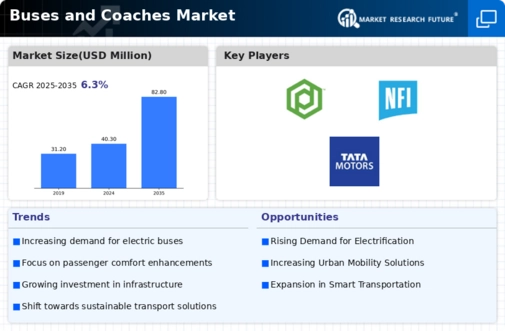
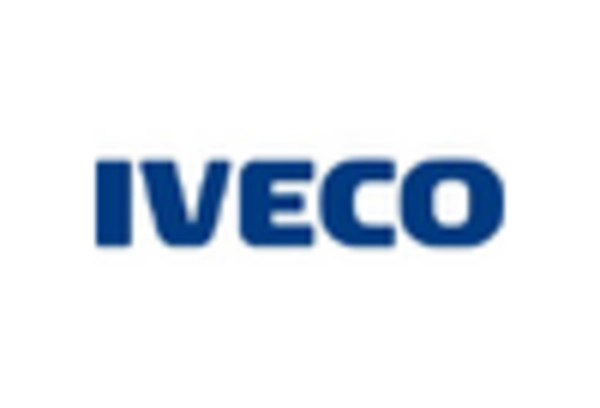
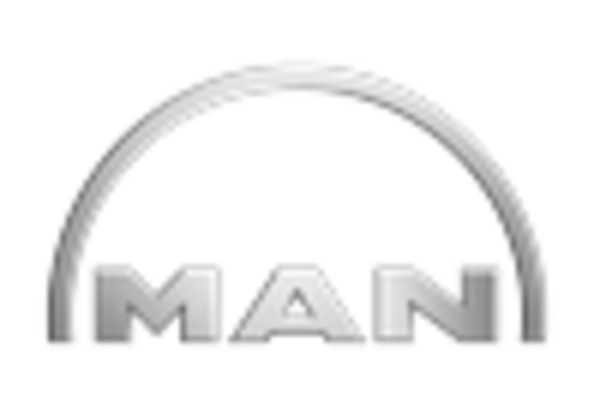
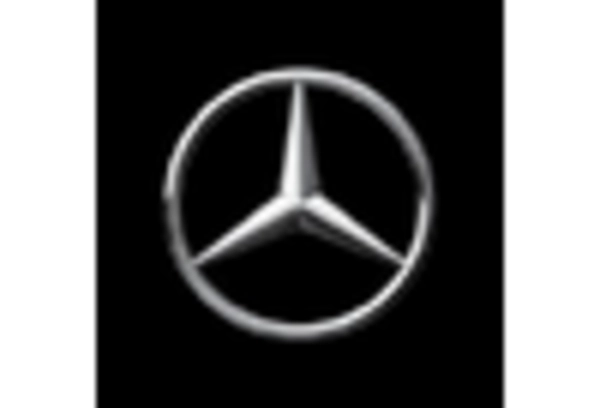
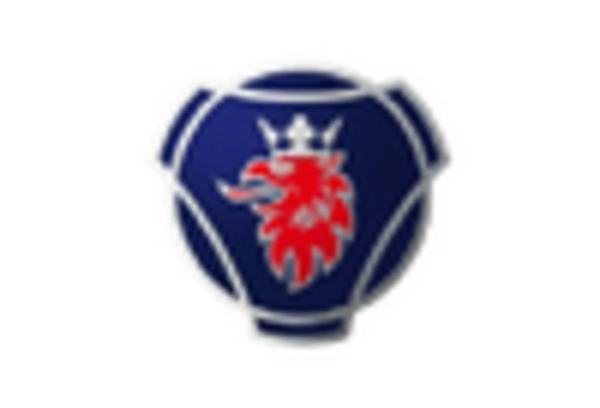
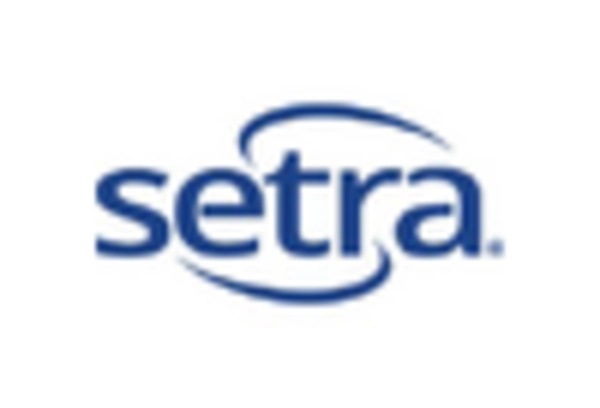
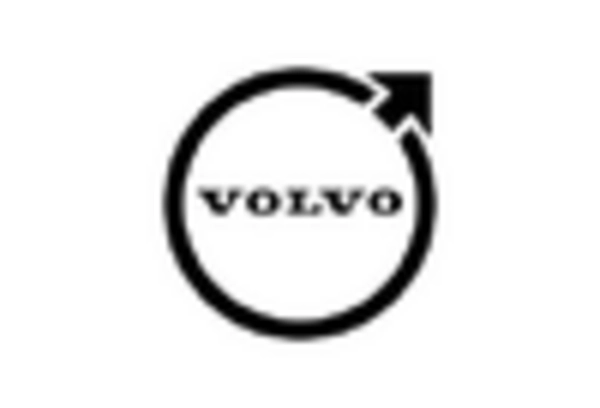









Leave a Comment